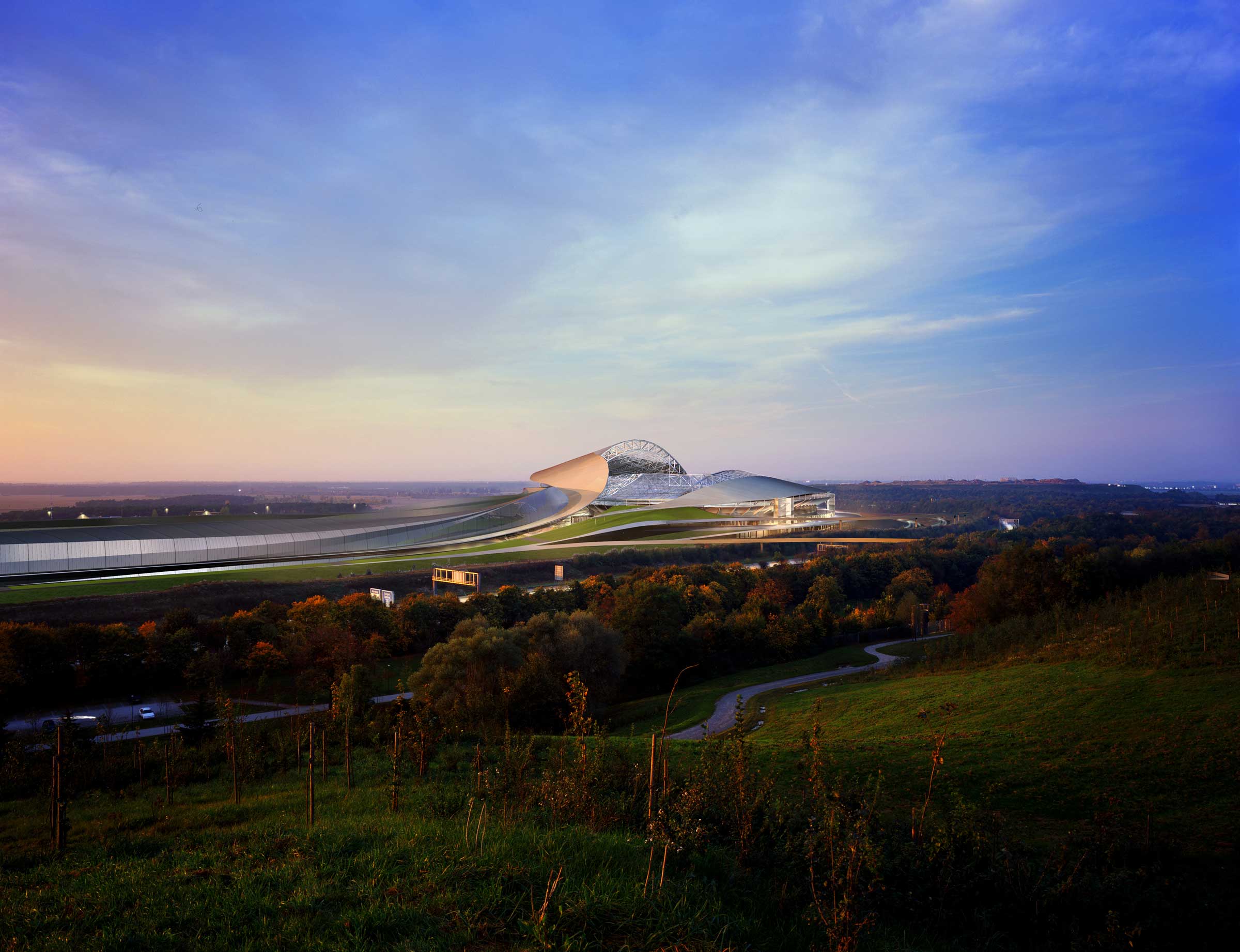
BAYERN MUNICH STADIUM
Location: Munich, Germany
Year: 2001
Symbolism in architecture has never been literal. It has always required the imagination of the viewer to decide what an object symbolized. In public buildings, which have traditionally attempted to express through form the differences between sacred and profane, public and private, this meant producing an image of something recognizable to the general public. To provide these images with value, historical precedents were often used to relate the present-day viewer with some absolute truths of the past. This was particularly true for the stadium. In the early twentieth century, when stadiums were located in dense urban contexts, they needed some kind of iconic distinction, usually in the form of classical colonnades reminiscent of the Colosseum in Rome. The colonnade gave the sense of a public building. As cities and their suburbs expanded after World War II, stadiums moved to remote areas. Surrounded by vast parking lots, the stadium became a stand-alone object. When stadiums began to adapt to modern structural and functional requirements, the symbolic became located in the spectacle of structure, yet still stood alone in a sea of parking.
What kind of stadium is a symbol of Munich today? The symbolism of static, hierarchic forms is no longer valid. Rather, the forms of the stadium need a symbolism that is plastic, flowing, and organic; an image of mobility and movement. Starting with the great arched roof, we attempt to distance the symbol of the stadium as a centralized form of power to become one of environmental and ecological responsiveness. This proposal reconsiders not only the experience of the game but also the expectancy that builds along the approach to the stadium. This promenade allows for fan’s activities not only on game days, but every day, melding the stadium into a natural flow of space and time.
Drawings
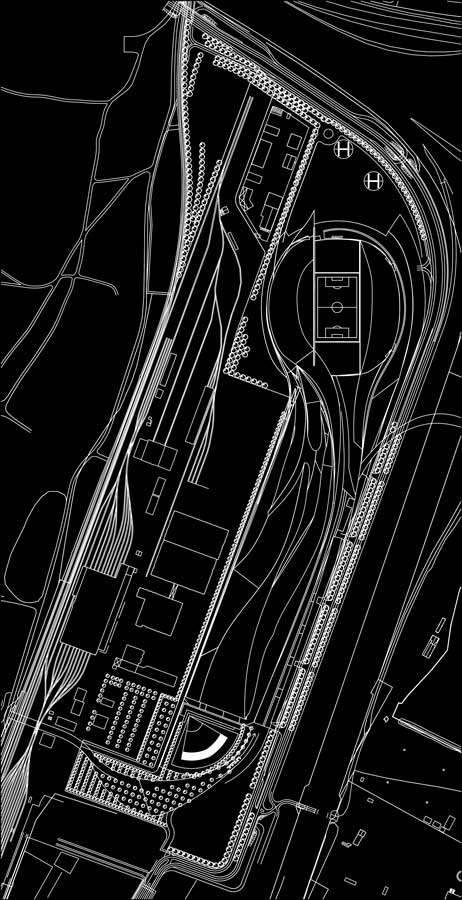
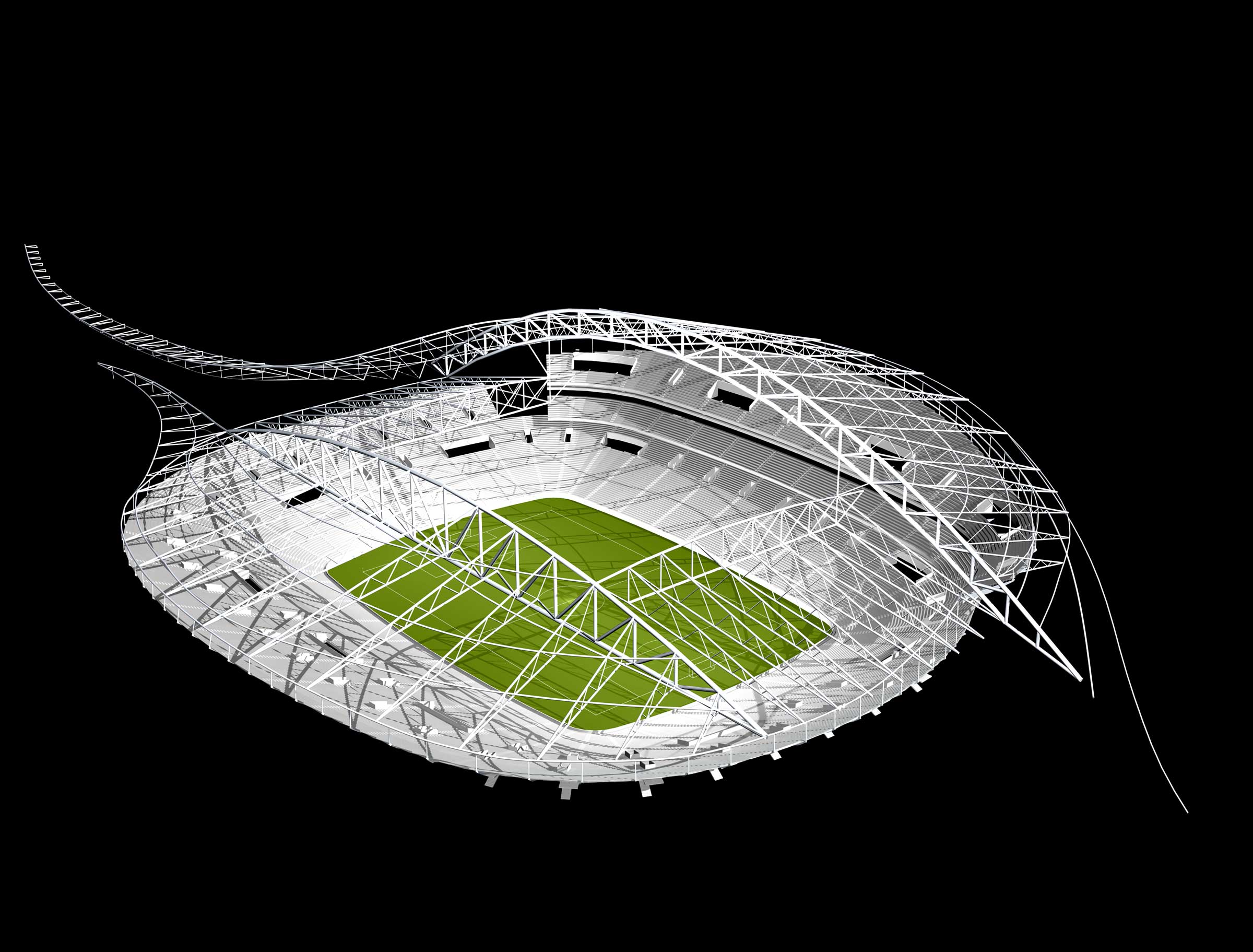
Model photos
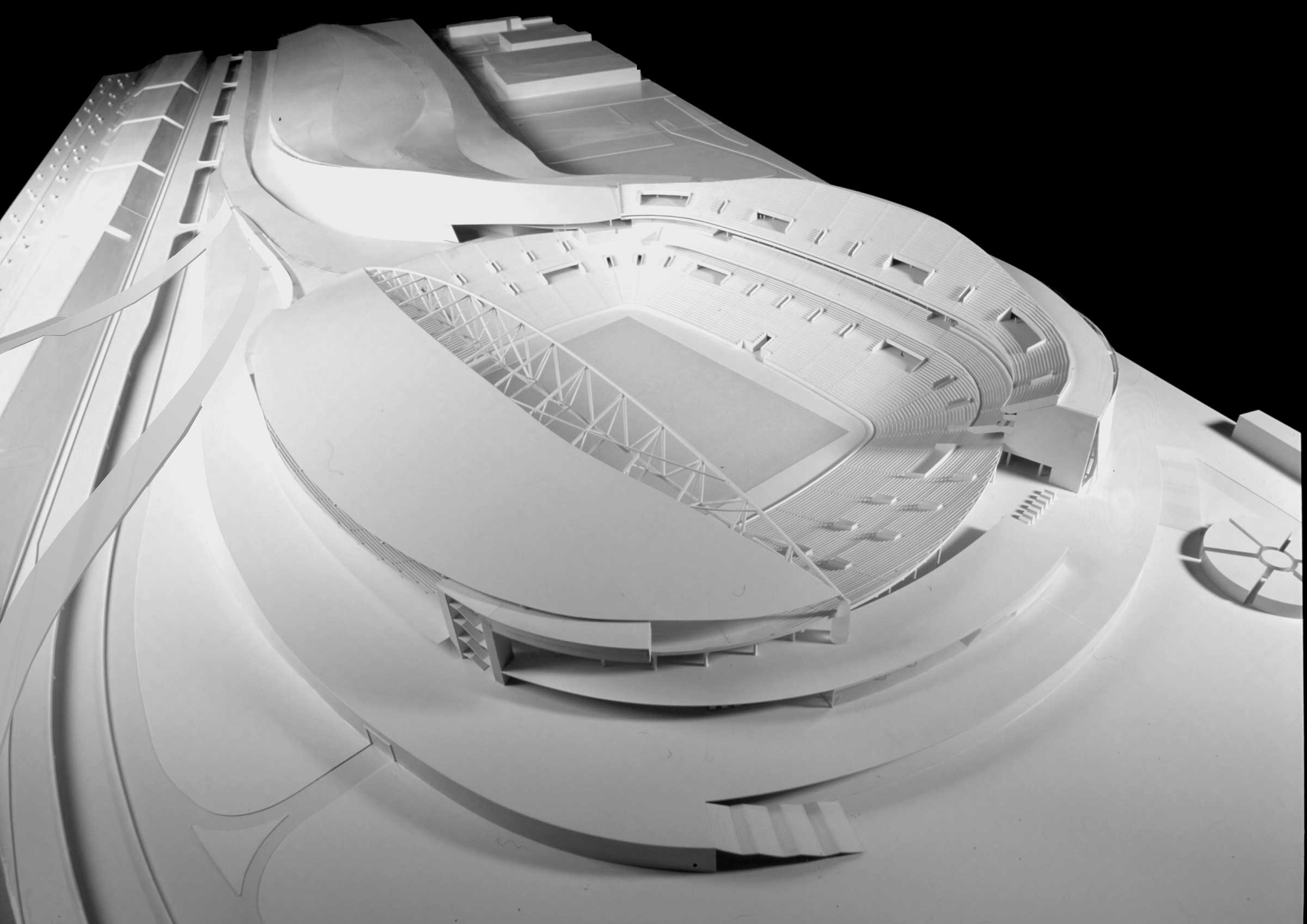
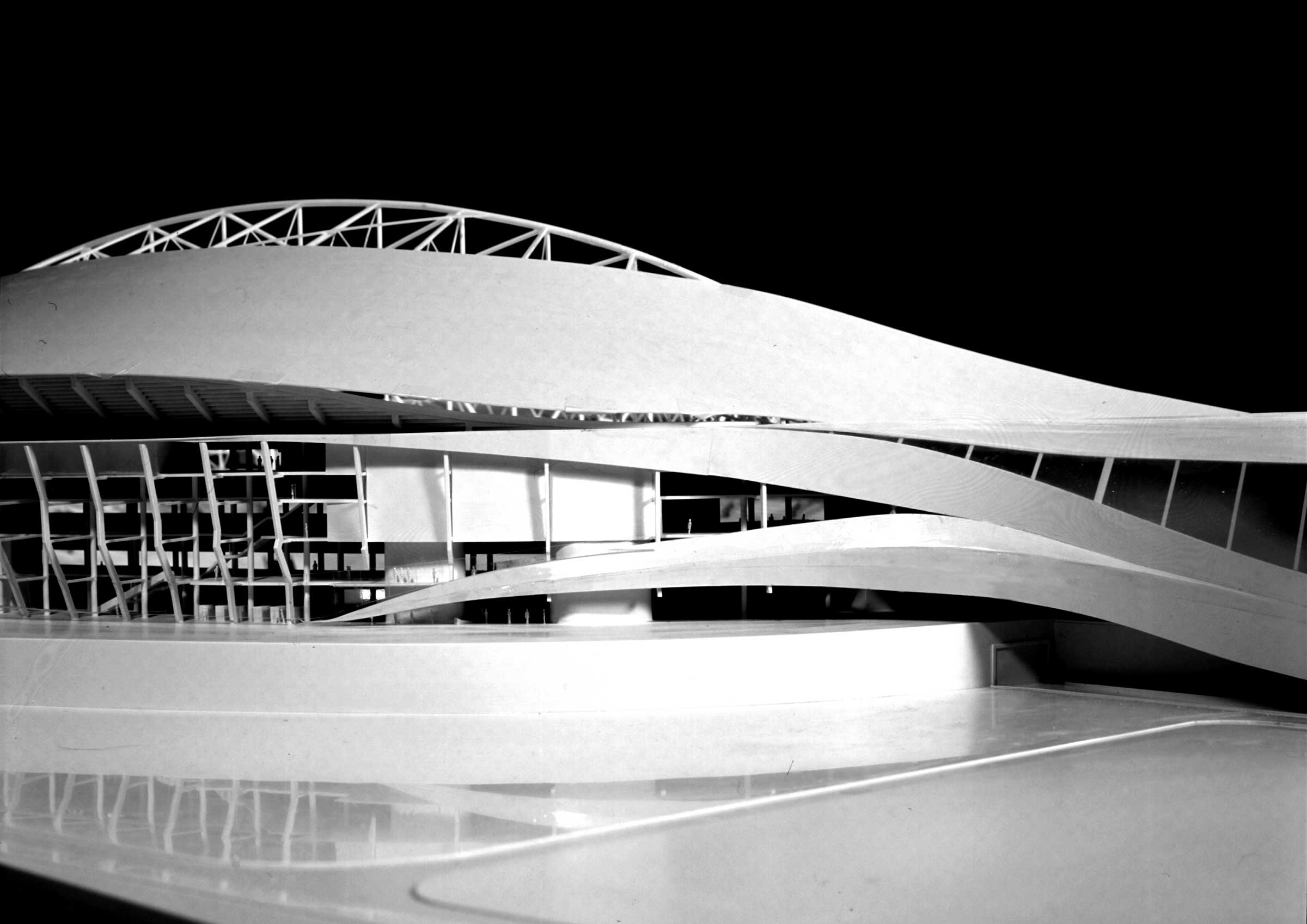
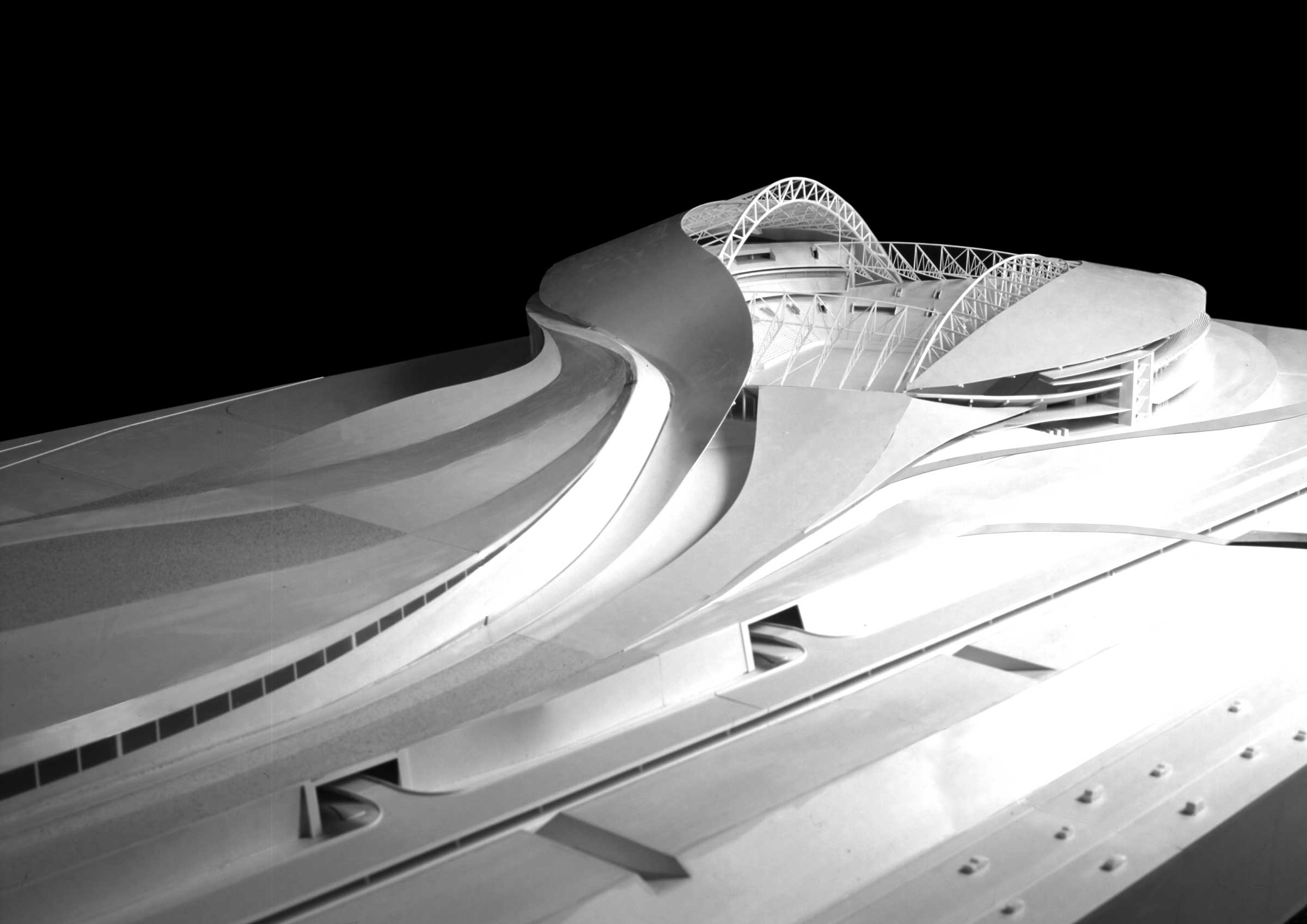
Images
